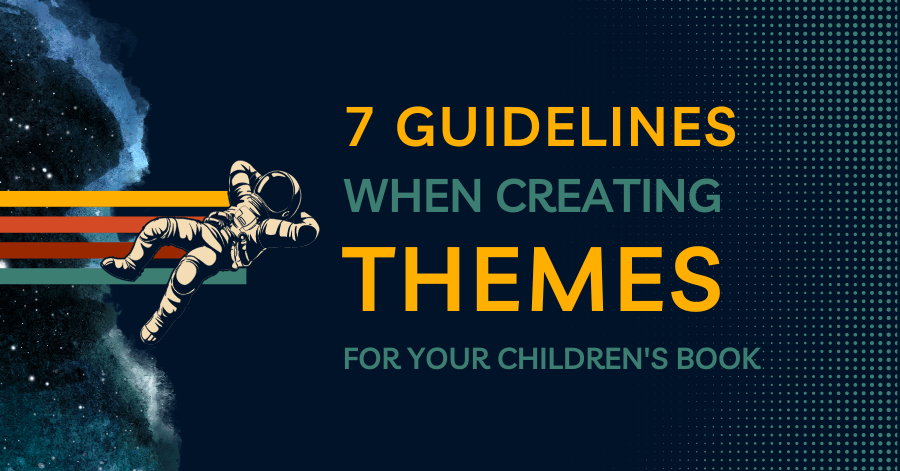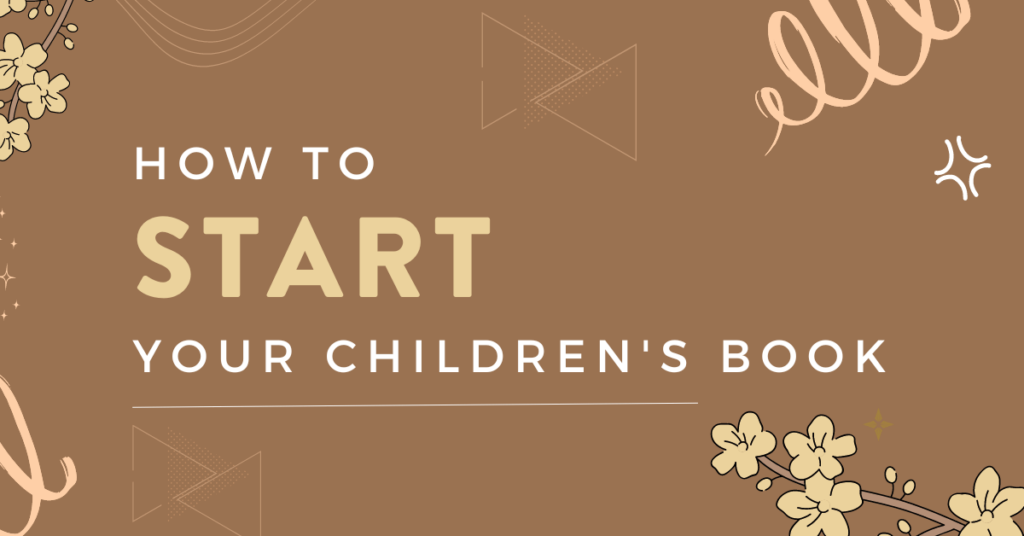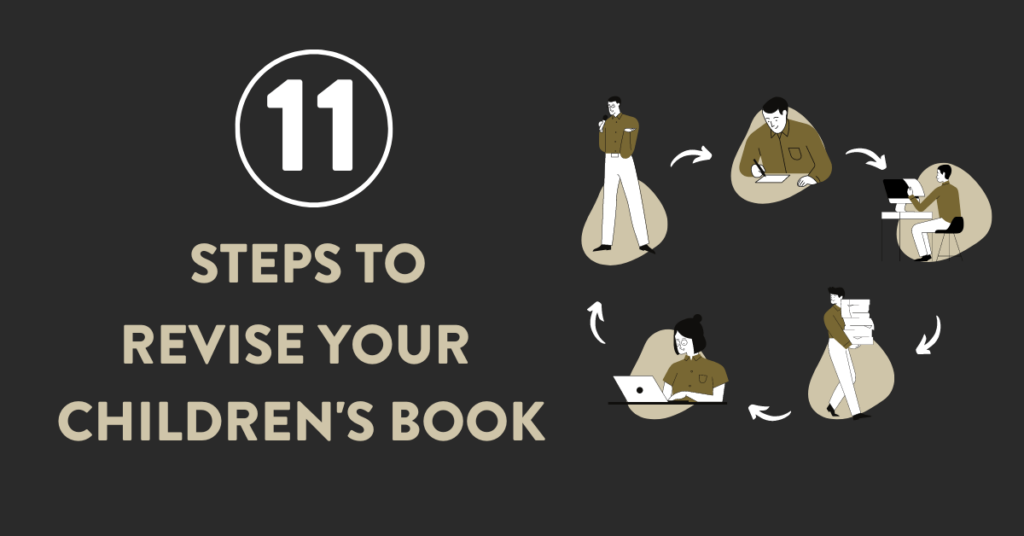
Ah, the eternal question every children’s book author wrestles with: What theme should my book tackle? Dive deep into the heart of children’s literature and you’ll find there’s a universe of themes waiting to be explored. But, let’s be real – not all themes are made equal. Some are timeless, others, well, not so much.
Remember “Green Eggs and Ham”? Dr. Seuss was not just telling us a quirky story about some weird guy trying to force Sam-I-Am to eat. Nope.
This tale dives into the magic of trying new things. Experimentation. Broadening horizons.
And man, who could forget the Dr. Seuss rainbow fish that taught us all a lesson or two about sharing and the beauty of generosity?
Anyway, here are 10 tips on how to create a theme in your children’s book:
1. Don’t Force It
Now, we all want our stories to carry weight, to resonate, to mean something. But here’s the skinny: Themes can’t be shoehorned in. They need to flow, to rise, to evolve organically.
If you start writing your book with the idea that this book is about X, Y, and Z, you might be writing a book that is too on the nose.
It’s better if you start with a character and a story, and when you reach the end of the first draft, you say: I actually think this is a book about how to avoid loneliness.
You can also “discover” sub-themes in your story. For example, if you’re writing a book with an anti-bullying theme, but you discover there’s an underlying theme of being patient with other’s mistakes. So don’t think there can only be a single theme in your writing.
2. A Theme isn’t a Lesson
Theme:
- Definition: The theme of a story is its central idea or message, a recurring topic or underlying concept that runs throughout the narrative. It’s often abstract and can be presented in various ways within the same story.
- Scope: Broad and universal. Themes are overarching ideas that can resonate across various cultural, temporal, and personal boundaries. Examples include love, sacrifice, betrayal, and the human vs. nature conflict.
- Interpretation: Themes are often open to interpretation. Two readers might identify different themes in the same story or interpret a common theme in distinct ways.
- Presence: A theme can be subtle, gently woven into the narrative without direct acknowledgment. It’s something readers often deduce or feel rather than being explicitly told.
Lesson:
- Definition: A lesson, often referred to as the “moral” of the story, is a specific principle or takeaway that the author wishes to convey to the reader. It’s a guide or recommendation for behavior or thought.
- Scope: More specific and directive than themes. Lessons are concrete messages or advice derived from the narrative. Examples might include “honesty is the best policy” or “perseverance pays.”
- Interpretation: While themes are open to interpretation, lessons are more straightforward. They provide clear guidance or a recommendation, leaving less room for ambiguity.
- Presence: In some stories, especially fables or children’s tales, the lesson is overt, sometimes even stated outright at the end. In other narratives, the lesson might be more implicit, but it’s usually clear enough for the reader to grasp.
An Example:
Let’s take Aesop’s fable, “The Tortoise and the Hare,” as an example:
- Theme: The story touches on themes of pride, underestimation, and the nature of unexpected outcomes.
- Lesson (Moral): “Slow and steady wins the race.” This is the specific takeaway that readers are meant to glean and apply in their own lives.
3. Show the Opposite of your Theme
If your book is about discrimination based on minor differences, you don’t want to only show characters who are not committing that mistake.
Actually, you need and want characters who are totally flubbing it up! Dr. Seuss’s “The Sneetches” offers a splendid demonstration of this. One of the central themes of this tale is the idea of equality, acceptance, and the futility of discrimination based on superficial differences.
In “The Sneetches,” we encounter two types of characters:
- Star-bellied Sneetches: They have stars on their bellies and consider themselves superior, forming an exclusive group.
- Plain-bellied Sneetches: Lacking the starred badge of the ‘elite’, they are excluded and treated as inferior.
If we didn’t have the star-bellied sneetches acting badly, then the theme wouldn’t be nearly as strong. But by showing the stark contrast, Dr. Seuss made the message clear and memorable.
I also talk about themes in my children’s book course. If you need help writing, editing, and publishing your children’s book, it’s the best course out there to guide you through the process.
4. Dialogue VS Plot as the Vehicle for Themes
Clearly, dialogue CAN be used to communicate themes. But one of the most common errors I see as a children’s book editor is authors trying to spell out the theme through dialogue, and that simply doesn’t work.
Ideally, the PLOT of your story should be the main way that the theme is communicated. If you need to use dialogue, you can use dialogue as well, but the best themes are communicated through the storyline itself, and any additional dialogue would seem redundant.
Here are some differences between using dialogue to communicate theme and using plot:
Authenticity and Subtlety:
- Plot: When themes emerge organically through events, character actions, and the progression of the story, they resonate more deeply. They feel like natural revelations rather than author-imposed lessons.
- Dialogue: Stating a theme directly through dialogue can sometimes come across as preachy or didactic. It can break the immersive experience for readers, making them feel lectured rather than engaged.
Emotional Resonance:
- Plot: Themes that are woven into the narrative and revealed through character arcs, conflicts, and resolutions allow readers to feel the theme. They experience it viscerally, making it more memorable.
- Dialogue: A theme stated outright in dialogue might be understood intellectually by the reader, but it might not resonate emotionally. It becomes a statement rather than an experience.
The upshot is that if you choose to use dialogue to add to the theme, make sure you do so briefly and don’t hammer the point home too harshly.
5. Start with a Theme
Themes shouldn’t be shoehorned into your story at the ending. They should be there in the very first line (along with a few other things, which I talk about in my blog post on starting a children’s book).
- Beginning of the Story: When a theme is introduced and nurtured from the outset, it weaves seamlessly into the narrative. It influences character development, plot progression, and the emotional arc of the story, allowing for a holistic exploration of the theme.
- Inserted Later On: Trying to inject a theme after much of the story is already developed can lead to inconsistencies or feel disjointed. It’s akin to trying to insert the foundation into a house that’s already built; the structure may not support it, and it can appear out of place.
That means you either need to:
- Have known about the theme since you began the story
- Go back and revise that first line or two once you realize the nature of your theme
6. Symbols and Metaphors
Sometimes your theme can be communicated through symbols and metaphors.
For example, the second best children’s book ever about a plant is “The Red Tree” by Shaun Tan (sorry, but “The Giving Tree” is in first place — you can disagree if you want but you’re wrong).
Tan uses the symbol of a red leaf to show the theme of hope, resilience, and finding light even in the darkest moments of life. This leaf appears in various illustrations throughout the book, often subtly.
The journey of the red leaf can be seen as a metaphor for hope. Even when it’s not the focal point, its persistent presence symbolizes the ever-present glimmer of hope in our lives, even in moments when it seems lost or overshadowed by challenges.
Usage Throughout the Book:
- Darkness and Desolation: In some pages, the protagonist is seen navigating bleak and challenging landscapes – from dark cityscapes to turbulent seas. Even in these daunting scenes, the red leaf is present, though sometimes just as a small, almost inconspicuous element.
- Glimmer of Hope: As the story progresses and the central character experiences feelings of isolation, despair, and confusion, the red leaf persists. It serves as a silent yet steadfast reminder of hope.
- Culmination: The book ends with a beautiful image of a vibrant tree with red leaves, standing tall and radiant. It’s a symbolic realization of the hope that the leaf represented all along. After all the trials and moments of despair, hope blossoms fully, showing its undeniable strength.
The recurring motif of the red leaf subtly yet powerfully drives the theme of resilience and hope. By the end, when the little red leaf has transformed into a magnificent tree, the metaphor becomes clear: Even in the darkest times, hope can flourish and overcome.
If you need more advice on this, read my 5,000-word post on how to write a children’s book.
7. Examples of Themes
If you’re having trouble coming up with the term or name for the theme in your children’s book, here are 10 examples from famous children’s books. Take a look and see whether one of them sparks your imagination:
- Self-Acceptance: “The Mixed-Up Chameleon” by Eric Carle tells the tale of a chameleon who wishes to be like other animals but eventually learns the value of its own unique self.
- Embracing Change: “The Very Hungry Caterpillar” also by Eric Carle, showcases the transformation of a caterpillar to a butterfly, subtly teaching children about growth and embracing life’s changes.
- Valuing Differences: “Elmer” by David McKee is about a brightly colored patchwork elephant who realizes that being different is completely okay and can even be something to celebrate.
- Perseverance: “The Little Engine That Could” by Watty Piper instills the “I think I can” spirit, teaching children about the value of persistence and positive thinking.
- Embracing Individuality: “It’s Okay to Be Different” by Todd Parr celebrates individuality and teaches children that everyone is unique and special in their own way.
- Generosity: “The Giving Tree” by Shel Silverstein is a touching narrative about a tree that gives everything to the boy she loves, showcasing selfless love and sacrifice.
- Bravery: “Sheila Rae, the Brave” by Kevin Henkes is about a seemingly fearless mouse who learns that everyone has moments of fear and that it’s okay to seek support.
- Curiosity and Adventure: “Where’s Spot?” by Eric Hill follows a playful puppy named Spot, fostering a sense of curiosity and adventure as children lift flaps to find him.
- The Bond of Family: “Mama, Do You Love Me?” by Barbara M. Joosse is a heartwarming story set in Northern Alaska. It delves deep into a child’s quest for assurance of her mother’s unconditional love.
- Understanding Emotions: “The Feelings Book” by Todd Parr helps children understand and articulate their emotions, from feeling brave to feeling left out.
FAQ:
1. Are there themes that are too complex for children’s picture books?
- While some themes may seem complex, it’s more about presentation than the theme itself. Children are insightful and can grasp intricate ideas if presented appropriately. That said, it’s crucial to be sensitive and age-appropriate.
2. Are certain themes overused in children’s picture books?
- As a reader of tens of thousands of children’s books and the editor of more than a thousand books, I can confidently say yes. But that doesn’t mean you can’t do them! They’re popular because they resonate with so many readers. So it’s not about avoiding common themes but presenting them in a fresh, unique way that captures readers’ imaginations.
3. Can I tackle contemporary issues as themes?
- Absolutely. In fact, you’ll have an easier time publishing and gaining an audience. One of the first books I edited that got picked up by a major publishers was one that focused on an environmental superhero. That’s very timely! Anyhow, many picture books address current societal issues, such as diversity, environment, or technology, so don’t shy away from any contemporary issues.
4. Can I change my theme during the writing process?
- Yes, themes can evolve as the story develops. Sometimes, as you delve deeper into your narrative, a more fitting or stronger theme might emerge. It’s essential, however, to ensure coherence. If you decide to shift your theme, you might need to revise elements of the story to align with this new direction. Remember, it’s not just about slotting a theme in, but integrating it seamlessly into the fabric of the story.
5. Do I have to have a theme in my picture book?
- While many picture books have themes that add depth and resonance, not every book must have an explicit theme. Some stories are meant to entertain, amuse, or simply depict a slice of life. However, even in such cases, readers often infer themes or messages, even if they aren’t intentionally embedded by the author. It’s more about what you want your readers to take away from the book. If you aim to convey a deeper message or lesson, integrating a theme is beneficial.
6. How do illustrations play a role in conveying the theme?
- Illustrations are pivotal in picture books, often speaking louder than words. They can emphasize, contrast, or subtly hint at themes, making them more accessible and engaging for young readers.
If you have your theme ready and your book is finished, then let us help you with publishing!
Bookfox Press helps children’s book authors on every level of the publishing process: illustrations, formatting, copyediting, and uploading.
Click that link and get a customized publishing package that’s right for you and your book.



